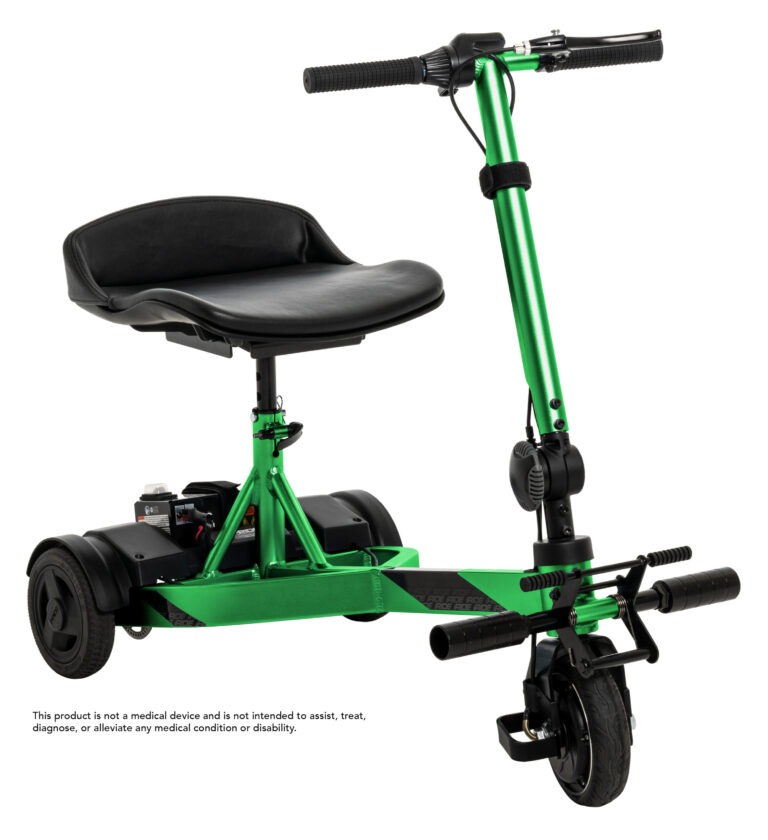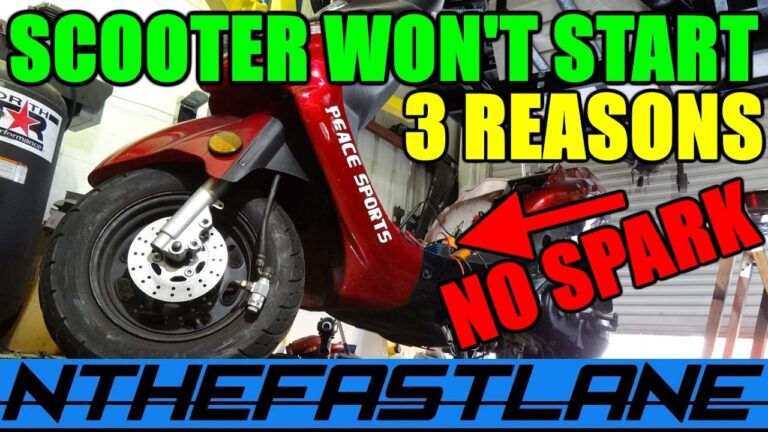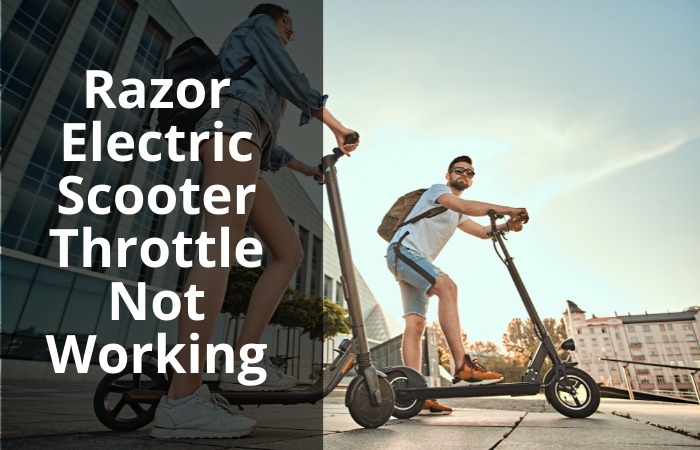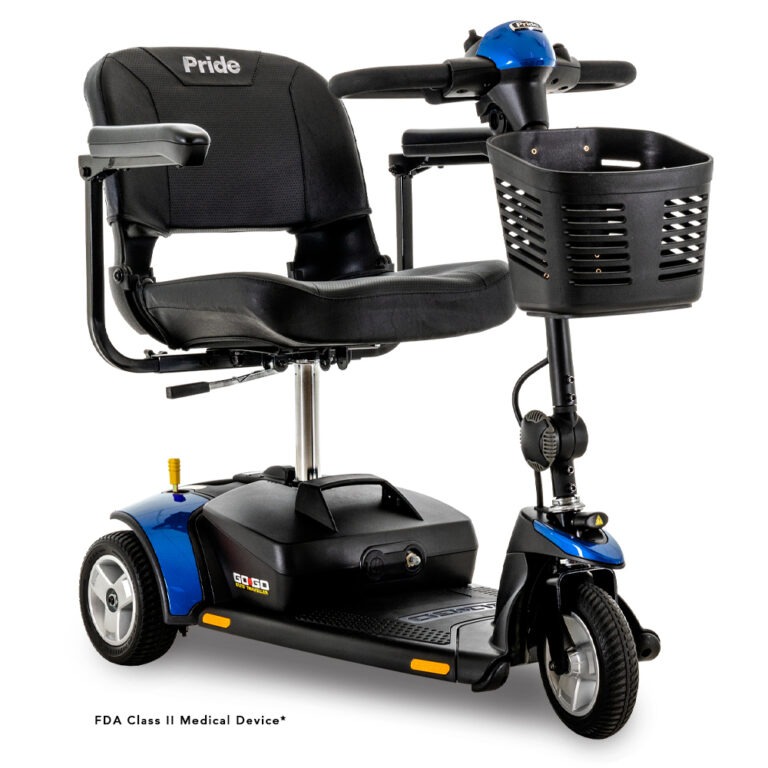Yamaha Scooter Not Charging: Troubleshoot and Fix the Issue
Yamaha scooter not charging: Possible causes can include a faulty battery, alternator, or regulator/rectifier. Besides, loose or corroded connections may also affect the charging system.
Yamaha Scooters are known for their reliability and performance. However, sometimes you may encounter issues with the charging system, causing the battery to drain and the scooter not to start. This can be frustrating, especially if you rely on your scooter for daily commuting or leisure rides.
Understanding the potential causes of a Yamaha scooter not charging is essential to diagnose and resolve the problem promptly. We will explore the various factors that can contribute to a failing charging system and provide possible solutions to get your Yamaha scooter up and running again. Whether it’s a faulty battery, alternator, or loose connection, we’ll guide you through the troubleshooting process step by step. So, let’s dive in and get your Yamaha scooter charging like new.
Common Causes Of Charging Problems
If your Yamaha scooter is not charging, it could be due to common causes such as a faulty battery, stator, or regulator. Ensure proper maintenance and check these components for any issues to resolve the charging problem effectively.
If you’re experiencing charging issues with your Yamaha scooter, it can be frustrating and inconvenient. Understanding the common causes of these problems can help you troubleshoot and resolve the issue faster. Here are some potential culprits to investigate:
Faulty Battery Connections:
- Loose battery terminals: Check if the battery terminals are securely connected to the scooter’s wiring harness. Loose connections can prevent proper charging.
- Corroded terminals: Inspect the battery terminals for any signs of corrosion. Corrosion can impede the electrical connection and hinder the charging process.
- Damaged cables: Examine the cables connected to the battery. Look for any visible signs of wear and tear, such as frayed wires or exposed insulation. Damaged cables can disrupt the charging system.
Damaged Charging System Components:
- Faulty alternator: The alternator generates the electrical power necessary to charge the battery. If it malfunctions, the battery won’t receive a sufficient charge. Consider checking the alternator for any signs of damage or wear.
- Worn-out stator: The stator is responsible for producing an alternating current (AC) that gets converted into direct current (DC) to charge the battery. Over time, the stator can wear out, leading to charging problems.
- Defective rectifier: The rectifier transforms the AC current from the stator into DC current. A faulty rectifier can prevent the battery from charging correctly. Inspect the rectifier for any signs of damage or malfunction.
Defective Voltage Regulator:
- Overcharging: A defective voltage regulator may cause the battery to become overcharged. This can result in damage to the battery and other electrical components. Pay attention to any signs of battery overheating or excessive electrolyte loss.
- Undercharging: Conversely, a malfunctioning voltage regulator can cause undercharging, leading to a depleted battery. If you notice your Yamaha scooter’s battery continuously discharging, the voltage regulator could be to blame.
Remember, it’s always a good idea to consult a professional mechanic if you’re uncertain about diagnosing and fixing charging problems on your Yamaha scooter. They have the expertise to identify and address the underlying issues effectively.
Testing The Battery
One way to troubleshoot a Yamaha scooter not charging is by testing the battery. To do this, you can use a multimeter to check if the battery is providing the proper voltage. If it is not, you may need to replace the battery to resolve the charging issue.
Yamaha Scooter Not Charging
Is your Yamaha scooter having trouble charging? Don’t worry, we’ve got you covered. In this section, we’ll guide you through the process of testing your scooter’s battery to identify and address the issue.
Check Battery Voltage
Before jumping to any conclusions, it’s essential to check the voltage of your scooter’s battery. A low voltage could indicate a charging problem. Here’s how you can do it:
- Use a multimeter to measure the voltage of the battery.
- Set the multimeter to the DC voltage mode.
- Connect the multimeter’s positive lead to the battery’s positive terminal and the negative lead to the negative terminal.
- Check the voltage reading displayed on the multimeter. A fully charged battery should read around 12.6 volts.
If the battery voltage is below the recommended level, it’s likely that charging is not occurring correctly.
Inspect Battery Connections
Another critical aspect to consider when diagnosing a charging issue is the battery connections. Loose or corroded connections can disrupt the charging process. Follow these steps to inspect the battery connections:
- Start by disconnecting the battery terminals, first the negative (-) and then the positive (+) terminal.
- Examine the terminals for any signs of corrosion or damage. If you notice any, clean them using a battery terminal cleaner or a mixture of baking soda and water.
- Ensuring a secure and tight connection, reattach the battery terminals, starting with the positive (+) terminal and then the negative (-).
By ensuring clean and tight connections, you can eliminate one potential cause of your scooter’s charging problem.
Test Battery Charging Capacity
If checking the battery voltage and inspecting the connections haven’t resolved the issue, it’s time to move on to testing the battery’s charging capacity. Performing this test can help determine if the battery is holding a charge properly. Here’s how you can do it:
- Start by fully charging the battery, either by using a battery charger or riding your scooter for an extended period to allow the battery to charge fully.
- Once the battery is fully charged, turn off the scooter and disconnect it from the charging source if applicable.
- Leave the battery disconnected for at least six hours to allow it to rest.
- After this resting period, reconnect the battery to the scooter and attempt to start it.
- If the scooter starts effortlessly, the battery is most likely holding a charge well. However, if the scooter struggles to start or fails to start entirely, it indicates a problem with the battery’s charging capacity.
By performing these tests, you can gain valuable insight into your Yamaha scooter’s charging issues. Remember to follow safety precautions and consult a professional if you’re unsure about any steps in the process.
Troubleshooting The Charging System
Experiencing issues with your Yamaha Scooter not charging? Our troubleshooting guide can help you diagnose potential problems and find solutions to get your scooter back on the road. Solve charging system issues efficiently with our expert tips.
If you own a Yamaha scooter and are constantly facing charging issues, don’t worry – we’ve got you covered. Troubleshooting the charging system is the first step in identifying and resolving the problem. Below, we’ll walk you through the inspection process for the stator, checking the rotor, and testing the voltage regulator.
Inspecting The Stator:
Inspecting the stator is crucial as it is responsible for generating the electrical energy required to charge the battery. Here’s how you can perform a stator inspection:
- Begin by locating the stator, typically found on the left side of the engine.
- Check for any physical damage such as cracks or wear. If you notice any issues, it’s best to replace the stator.
- Measure the resistance between the stator’s leads using a multimeter. Compare the readings with the manufacturer’s specifications to ensure they fall within an acceptable range.
- Verify the stator’s wire harness for any signs of damage or loose connections. Secure any loose connections and repair or replace damaged wiring as necessary.
Checking The Rotor:
The rotor plays a crucial role in generating the necessary magnetic field for charging the system. Follow these steps to check the rotor:
- Locate the rotor, typically situated on the right side of the engine, opposite the stator.
- Inspect the rotor for any visible signs of physical damage or deformation. Replace the rotor if necessary.
- Measure the rotor’s resistance using a multimeter. Ensure that the readings align with the manufacturer’s specifications.
- Verify the rotor’s wire harness for any signs of damage or loose connections. Fix any loose connections and replace damaged wiring as needed.
Testing The Voltage Regulator:
The voltage regulator controls the charging voltage to prevent overcharging the battery. Here’s how you can test the voltage regulator:
- Locate the voltage regulator, typically located near the battery or the stator.
- Ensure the ignition is off and disconnect the voltage regulator’s harness.
- Measure the resistance across the voltage regulator’s terminals using a multimeter. Again, refer to the manufacturer’s specifications to ensure the readings are within an acceptable range.
- If the resistance readings are outside the specified range, consider replacing the voltage regulator.
- Reconnect the voltage regulator’s harness and start the scooter to verify if the battery is charging properly.
By following these troubleshooting steps for the charging system of your Yamaha scooter, you can identify and resolve any charging issues effectively. Remember, it’s always essential to consult the manufacturer’s guidelines when conducting these inspections and consider seeking professional assistance if needed.
Enjoy your scooter rides worry-free with a fully charged battery!
Fixing The Charging Issue
Is your Yamaha scooter not charging? Don’t worry, we’ve got you covered! Our experts are here to help fix the charging issue, ensuring your scooter is back on the road in no time. Stay worry-free and enjoy your ride with a properly charging Yamaha scooter.
If you’re facing a charging issue with your Yamaha scooter, there are a few steps you can take to fix the problem. Here, we will explore three possible solutions to address the charging issue and get your scooter back on the road in no time.
Replacing Faulty Battery Connections
One common cause of a charging issue is faulty battery connections. If the connections are loose or corroded, they can prevent the battery from charging properly. Here’s what you can do to fix it:
- Inspect the battery connections for any signs of corrosion or looseness.
- If you spot corrosion, clean the terminals using a wire brush and some baking soda mixed with water.
- Ensure that the battery connections are tightly secured.
- If the connections are severely corroded or damaged, consider replacing them with new ones.
Repairing Or Replacing Damaged Charging System Components
If the battery connections are not the issue, the problem might lie in the charging system components. Here’s what you can do to address this:
- Start by checking the condition of the charging system components, such as the stator and rectifier.
- Look for any signs of physical damage or wear.
- If you notice any issues, you may need to repair or replace the damaged components.
- Consult the Yamaha scooter manual or seek professional assistance for the specific repair or replacement process.
Installing A New Voltage Regulator
The voltage regulator plays a crucial role in ensuring the proper charging of the scooter’s battery. If it becomes faulty, it can lead to a charging problem. Follow these steps to install a new voltage regulator:
- Determine the location of the voltage regulator on your Yamaha scooter.
- Disconnect the wiring harness connected to the old voltage regulator.
- Remove the old regulator from its mounting location.
- Install the new voltage regulator, ensuring it is securely mounted.
- Reconnect the wiring harness to the new voltage regulator.
By following these steps, you can address the charging issue with your Yamaha scooter. Remember to exercise caution and seek professional assistance if needed. With the charging problem fixed, you’ll be able to enjoy a smooth and reliable ride on your scooter once again.
Ensuring Proper Charging
If your Yamaha scooter is not charging, it is essential to ensure proper charging. Check the battery connections, inspect the charging system components, and if needed, replace faulty parts to get your scooter back up and running efficiently.
Regular Maintenance And Inspection
- Regularly inspect the battery to ensure it is clean and free of debris, as dirt or grime can affect the charging process.
- Check the battery cables for any signs of wear or damage. Replace them if necessary.
- Inspect the charging system components, such as the rectifier and regulator, for any visible damage or loose connections.
- Clean the battery terminals and connectors to maintain good contact and prevent corrosion.
- Keep an eye on the battery’s water level, if applicable, and ensure it is filled to the recommended level using distilled water.
- Test the battery’s voltage regularly to ensure it is within the specified range. If it falls below the recommended level, it may need to be replaced.
Taking Precautions To Avoid Future Charging Problems
- Avoid running the scooter’s electrical components, such as headlights or stereo, for an extended period with the engine off as this can drain the battery.
- Limit short trips and try to ride the scooter for longer distances regularly to allow the battery to charge fully.
- Opt for a higher-capacity battery if you tend to use a lot of electrical accessories or frequently take short trips.
- Turn off any unnecessary electrical components when not in use to conserve battery power.
- Avoid leaving the scooter unused for long periods without starting or charging the battery. It can lead to battery depletion.
Getting Professional Assistance If Needed
- If you have followed all the maintenance steps and your Yamaha scooter is still experiencing charging issues, it might be time to seek professional help.
- Consult a qualified mechanic who specializes in Yamaha scooters to diagnose and resolve the charging problem.
- The mechanic may conduct a thorough inspection of the charging system, including the battery, alternator, and related components, to identify any underlying issues.
- They can perform professional tests, such as load testing the battery or checking the stator output, to pinpoint the exact cause of the charging problem.
- Taking your scooter to a professional can ensure a proper diagnosis and save you time and effort trying to troubleshoot the issue on your own.
Remember, by practicing regular maintenance and inspection, taking precautions to avoid future charging problems, and seeking professional assistance when needed, you can ensure proper charging for your Yamaha scooter.

Credit: m.youtube.com
Frequently Asked Questions Of Yamaha Scooter Not Charging
How Do I Fix My Electric Scooter Not Charging?
Troubleshoot electric scooter not charging: check connections, replace charger, examine battery condition, consult technician.
How Do I Know If My Scooter Battery Is Bad?
To determine if your scooter battery is bad, check for signs like difficulty starting, reduced power and shorter battery life.
How Do You Test A Scooter Charging System?
To test a scooter charging system, follow these steps: 1. Start the scooter’s engine and let it run for a few minutes. 2. Use a voltmeter to check the battery voltage while the engine is running. 3. Compare the voltage reading to the manufacturer’s recommended range.
4. If the voltage is too low, check the battery connections, fuses, and wiring for any issues.
How Do I Manually Charge My Scooter Battery?
To manually charge your scooter battery, follow these steps: 1. Locate the charging port on your scooter. 2. Connect the charger to the charging port. 3. Plug the charger into a power outlet. 4. Let the battery charge until it reaches its full capacity.
Conclusion
Having a Yamaha scooter that is not charging can be frustrating, but it’s important to remember that there are several possible reasons for this issue. It could be a problem with the battery, the alternator, or even the wiring. To diagnose and fix the problem, it’s best to consult a professional mechanic who has experience with Yamaha scooters.
They will be able to identify the root cause of the issue and recommend the appropriate repairs. Regular maintenance and proper charging practices can help prevent charging problems in the future. By taking care of your scooter and addressing any issues promptly, you can ensure that it stays reliable and ready to hit the road whenever you need it.
Don’t let a charging problem keep you from enjoying the freedom and convenience of your Yamaha scooter.






